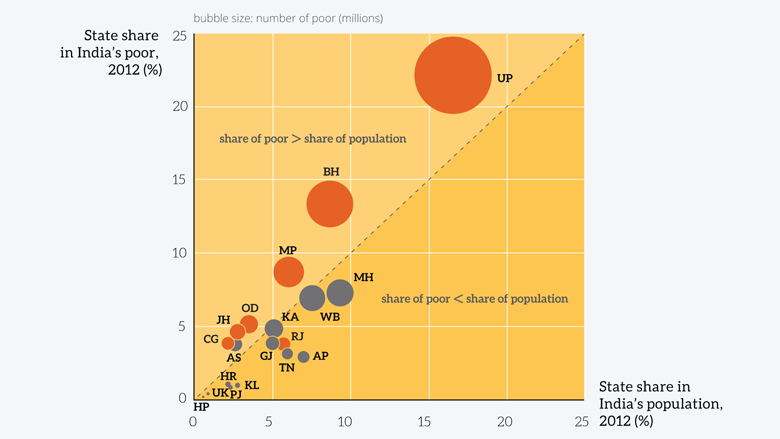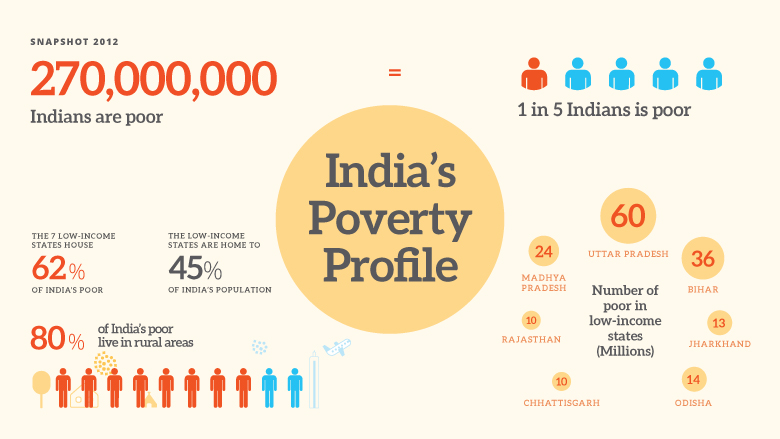Any effort to understand India must begin by acknowledging the existence of not one but many Indias. The country is home to over 1.2 billion people spread across 3.3 million square kilometers of land. India’s population resides in a variety of geographies and is characterized by diverse cultural, ethnic, linguistic and religious affiliations. Well-being and prosperity vary widely across the country.
While India’s economy grew more rapidly after the mid-2000s and millions were lifted out of poverty, the gains were unevenly spread across different regions. Despite appreciable progress, some of the ‘low-income states’ (LIS) - namely Bihar, Chhattisgarh, Jharkhand, Madhya Pradesh, Odisha, Rajasthan and Uttar Pradesh - continue to lag behind the rest of the country. After 2005, all LIS, with the exception of Bihar and Rajasthan, grew at a slower pace than other states. Poverty reduction in these states was also not as responsive to economic growth as in the rest of the country. In other words, economic growth in the LIS has been less inclusive than in India as a whole. Though progress on human development outcomes such as health and education has been relatively muted for the country as a whole, the LIS have a lot more ground to cover. Underlying this divergence is the variance in the capacity and performance of institutions across the country.


